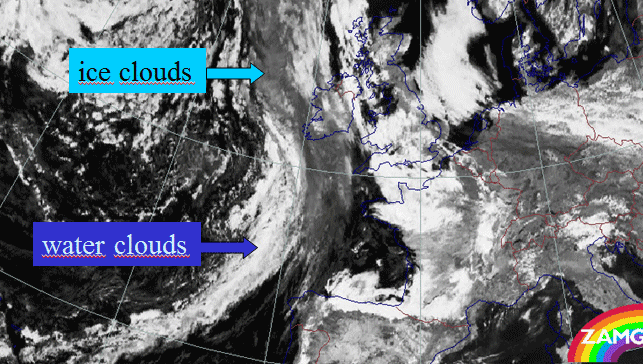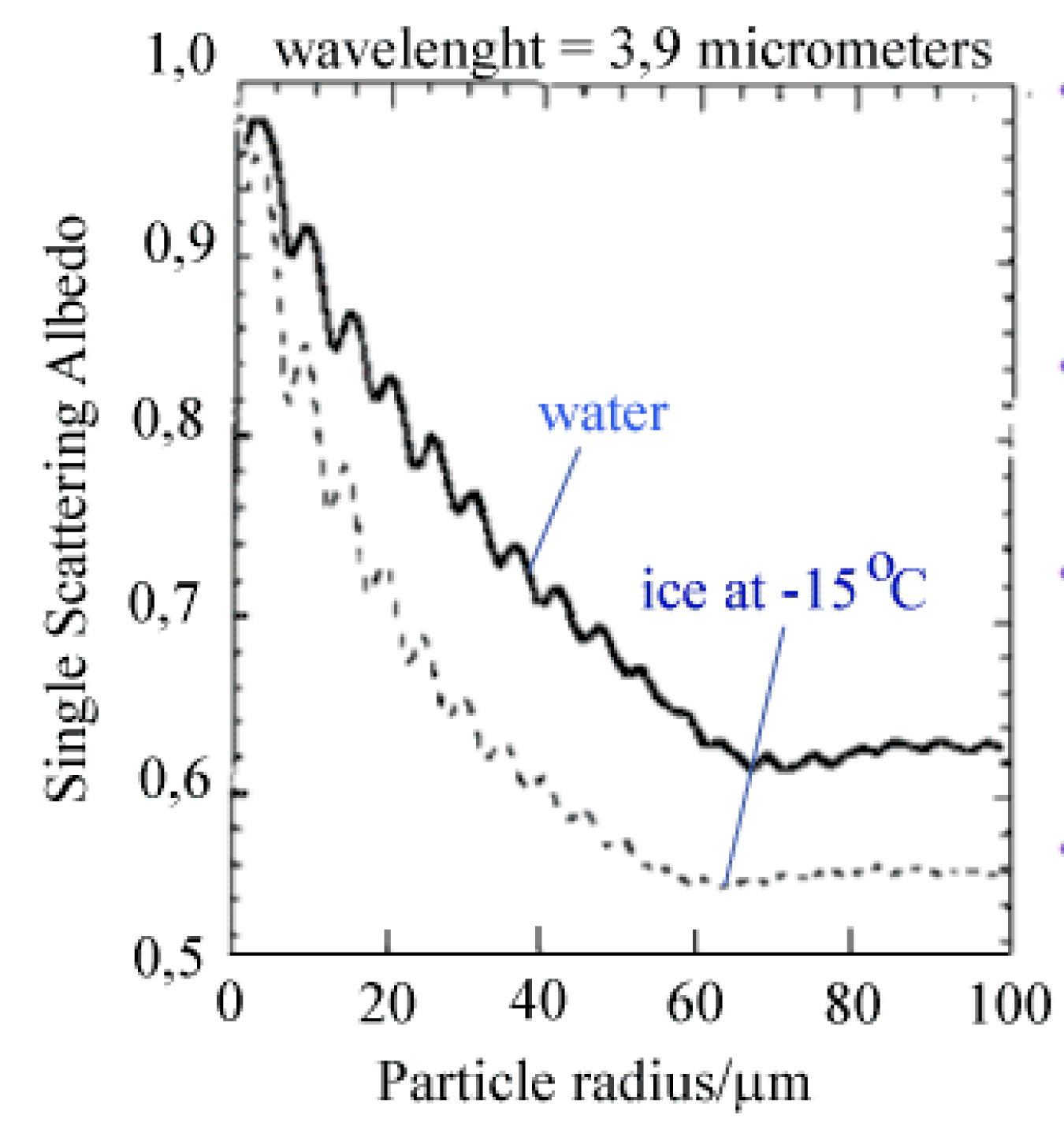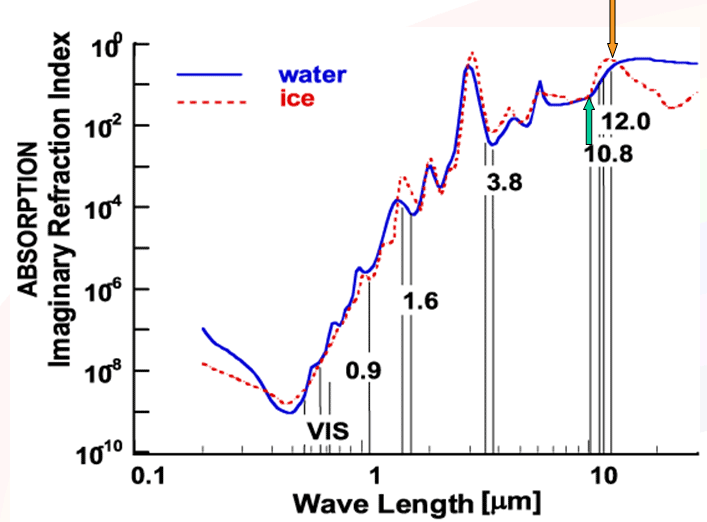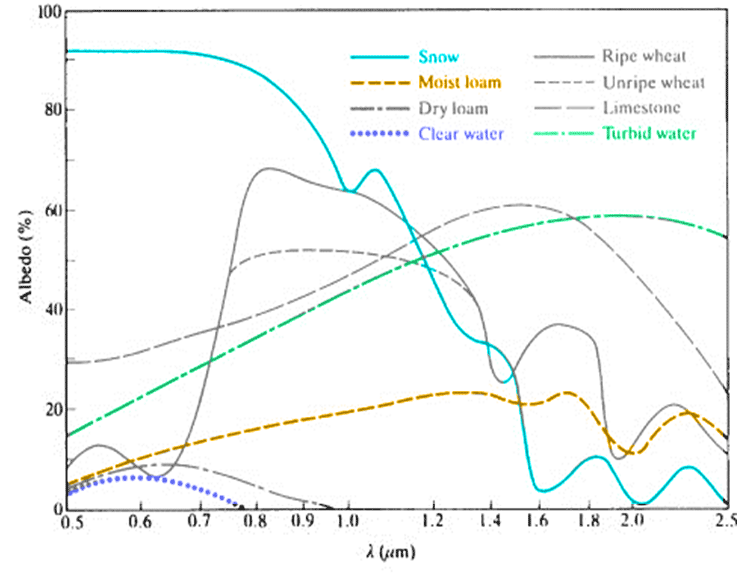Differentiating between ice and water clouds
NIR 1.6
The best tool for this is the near infrared (NIR) channel with the wavelength 1,6 μm. This channel is available in Seviri images from the geostationary satellite MSG. It distinguishes both water phases and cloud droplet/particle sizes:
Fig 3.1. Reflectance of clouds in channel 1.6μm.
In NIR1.6 image water clouds are white:
Fig. 3.2. Ice and water clouds in channel 1,6μm.
This channel, being a solar channel, can only be used during daytime.
NIR 3.9
Another channel that can used similarly to 1,6 μm is the 3,9 μm channel, which is partly solar and partly infrared. This channel is available both in MSG and polar orbiting satellites. In the channel there is a difference in wavelength in the reflection of solar radiation from ice particles and water drops. Properties of the channel:
- Reflection at 3,9 μm is sensitive to cloud phase and very sensitive to particle size.
- Reflection is stronger from water droplets than from ice particles.
- During daytime, clouds with small water droplets (stratus and stratocumulus) are much darker than ice clouds.
- Stratocumulus is darker over sea than land.
Figure 3.3. shows particle radius/µm as a function of single scattering albedo. This albedo is the ratio of scattering efficiency to total extinction efficiency (attenuation). The attenuation for water is clearly different from the attenuation for ice.
Figure 3.3. Attenuation for ice and water as a function of particle radius/µm.
Differences between infrared channels 10,8 µm and 12,0 µm
A product that can be used day and night is the difference between two infrared channels: 10.8 µm – 12.0 µm. In the 10,8 µm channel the absorption levels are the same for both water and ice, but 12,0 µm is absorbed slightly more strongly in the ice phase. The difference is too small to be actually seen by comparing the images, but it can be revealed clearly when the two channels are subtracted.
In general, when studying the propagation of electromagnetic waves through any material, it is presented as refractive index (a plain number, varying greatly with wavelength). In opaque material this index is a complex number, where the real component describes refraction and the imaginary part accounts for absorption.
Fig. 3.4. Imaginary refractive index for water and ice as a function of wave length/µm. The green and orange arrows show the absorption for the wavelenghts 10,8 µm and 12,0 µm.
Differences between solar channels 0,6 µm and 0,9 µm
The solar 0,6 μm channel reflects more strongly from optically dense objects than from transparent ones - that means that snow and ice clouds appear lighter than water clouds. On the other hand, 0,9 μm (which is referred to as a visual channel, in spite of it being slightly outside the human visual range) is reflected more strongly from ground than from low (usually water) clouds. The albedo for different reflective objects as a function of wavelength:
Fig. 3.5. Albedo as a function of some reflective objects. (EUMETSAT)




